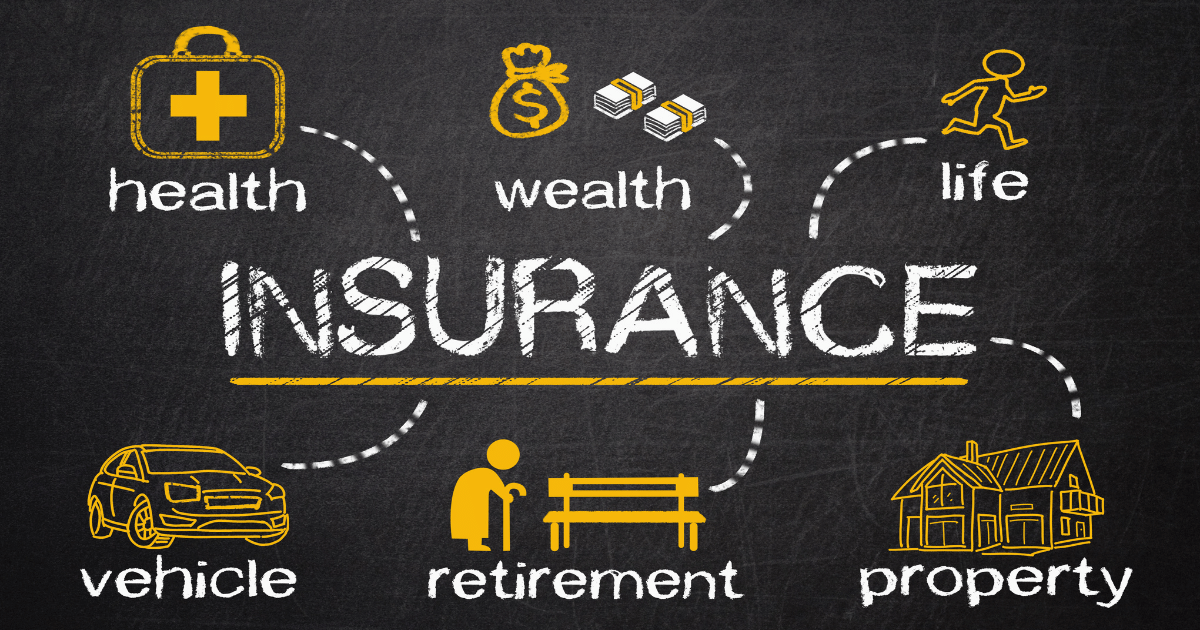Shield Insurance Blog | Long – Term Caregivers | Health Insurance
The way we approach aging, as individuals and as a society,
continues to evolve, dramatically.
At Genworth, we released a new study, Beyond Dollars 2018. But before I tell you more about it — and share some of the eye-opening results — I think it’s important to share why we did it in the first place.
Aging in America Has Come Full Circle
In the 1800s, it was common for older adults to rely on family. While the wealthiest families could fund a comfortable retirement, those who labored on farms or in factories often worked until they were physically unable to work any longer. They worked because it allowed them to maintain their independence and grow older in their own home.
When old age eventually forced their hand, many moved in with their children, who then took over as head of the household — creating a sense of dependency. While there were benefits to multi-generational households, they tended to come about not by choice, but by necessity.
During the 1900s for some people, aging was, in effect, outsourced.
First, it was outsourced to hospitals. Older adults needed care, but it wasn’t necessarily for the types of medical conditions that required 24/7 monitoring by physicians. The care they really required was not medical care, but long-term care — help meeting their most basic needs, like eating, bathing, and getting dressed.
Long-term care needs are more common than most of us know or admit. According to the Department of Health and Human Services, the majority of us will need long-term care services as we age — and the longer we live, the more likely we are to have a need for it.¹
As I wrote in “The Downside of a Miracle,” the blessing of longer life expectancies also burdened more people with diseases and conditions that can lead to a long-term care need — like Alzheimer’s, cancer, or stroke. Doctors manage the treatment of these conditions, but who takes care of meeting everyday needs?
Suffice it to say, hospital stays are expensive — especially for someone who might need long-term care for months or even years. “By the early 1950s, long-term stays in the hospitals were common for older people,” reads the Encyclopedia for Elder Care.
America needed another option, and in 1954 a change in federal law incentivized the construction of nursing homes designed to deliver round-the-clock elder care. Of course, many people needed less care and wanted more independence. Over the following decades, this increased demand led to the creation of still more options, like assisted living/residential care facilities and adult “daycare” centers.
You might expect all this to have led to a decrease in hospital admissions, and that’s what has happened. Even though the U.S. population has only increased since 1981,² the number of times Americans have checked into hospitals has actually decreased. As Ezekiel J. Emanuel wrote in The New York Times, “The number of hospitals is also declining because more complex care can safely and effectively be provided elsewhere, and that’s good news.”
Although nursing homes, assisted living, and adult day care facilities can provide the right care, according to an NCOA study, “approximately 90 percent of seniors intend to continue living in their current homes.”³ So aging in place is still the optimal choice for many.
With that in mind, the results of a recent survey⁴ won’t come as a surprise. Researchers asked health care industry executives about where they’re investing most. Some — 7 percent — are looking to innovate within existing long-term care facilities, McKnights wrote. But far more — 44 percent — are investing in home health.
Aging in America has come full circle — with one important caveat. Growing older at home was once the only option. Now, it is the first choice.
Today, our goal is to help people age independently, on their own terms, with children and family members providing support. Our Beyond Dollars Study⁵ points the way to making that happen. Let’s look first at the dollars themselves.
The Cost of Aging in Place using Long – Term Caregivers
Aging at home means bringing long-term care services home. Like it or not, this care comes at a cost, and the financial costs are just the beginning.
Those who wish to age in place might hire a home health aide or homemaker service. In-home care assistance averages around $4,000 a month. (That’s based on a national median. You can use Genworth’s Cost of Care web app to see what costs are like in your area⁶.)
As discussed in “The Downside of a Miracle,” long-term care is different from health care. It’s not covered by regular health insurance, and it’s not covered by Medicare except for a limited time after a hospital stay. To get insurance to cover long-term care expenses, you need to get a long-term care insurance product.
Those who don’t purchase long-term care insurance have a few options. Those who are wealthy enough can spend down their retirement savings. And others who spend down enough of their assets can qualify for Medicaid — the government health care program designed for the destitute, which covers long-term care.
But many families are caught in the middle: too wealthy to qualify for Medicaid but not wealthy enough to comfortably cover the cost of care without spending the savings that would have supported a comfortable retirement or provided an inheritance for the next generation.
Many turn to family and friends to provide care without compensation. But uncompensated doesn’t mean cost-free.
Caring for a friend or loved one can be an experience that is both rewarding and challenging. When considering this option, it’s important to understand what’s required of caregivers. Unpaid care still comes with financial costs, as well as emotional ones. And that’s what the Genworth Beyond Dollars Study 2018⁷ is all about.
The Cost of “Free” (Unpaid) Care from Long – Term Caregivers
In some cases, the need for long-term care can arise unexpectedly, and immediately, like after a stroke or a fall. In other cases, it can become increasingly necessary over time — for instance, as a person living with dementia comes to rely more and more on the people around them.
As our Beyond Dollars Study⁸ shows, about one-in-five indicate they or a close relative (over the age of 25) have experienced an extended healthcare event in the past 12 months.⁹ Spouses, children, friends, and neighbors are often quick to offer help. They shop for groceries and cook meals. They help with dressing and getting out of the house. They schedule appointments and drive to them.
Help meeting these basic needs doesn’t just make a meaningful difference for those who receive care; it can also benefit the caregiver. When we talked to unpaid caregivers for the study, 82 percent of them said they experienced some positive aspects of providing care.¹⁰ Many said it was a source of pride to be able to provide support at a time when someone needed it most. Others found that the experience strengthened their spiritual life and improved their perspective on life in general.
But Beyond Dollars found that caregivers experienced downsides, as well. Giving care also means giving up other things in the process. It can mean putting life and relationships on hold, as well as putting their own health and finances at risk.
Our data show that unpaid long – term caregivers make four key sacrifices:
- Their time: On average, caregivers spend 21 hours per week providing support. More than 20 percent report that they’re regularly late to work or absent from work for more than 10 hours a week — a quarter of a 40-hour work week. More than half of caregivers report losing a third of their annual income in the process. Over the three years of a typical long term care need, that means sacrificing an entire year’s paycheck.
- Their income and savings: When the care is unpaid, caregivers end up taking money out of their own pocket to cover needed costs — more than $10,000 total, on average. To cover the cost of supplies, transportation, and other basic needs, the majority of caregivers go so far as to cut back on their own spending and tap into their own savings or retirement funds. Savings that would have gone to college funds, home repairs, or vacations are redirected to long term care.
- Their other relationships: Although providing care can deepen a relationship with the person who receives that care, other important relationships can suffer. Most caregivers are married with children under 18. Time spent caregiving is time that could have been spent helping with homework, going to sports events, or traveling for vacation. It’s remarkable that 40 percent of those surveyed said caregiving strained their relationship with their spouse.
- Their own health and well-being: For caregivers who are also juggling family and career, all the sacrifices add up. Caregiving can take a toll on physical, mental, and emotional health: 41 percent experienced negative feelings — including depression; 46 percent said that caregiving affected their overall health and well-being; 50% of caregivers report having less time for their spouse/partner, children and themselves.¹¹ And more than half experienced an increase in stress.
At its most fundamental level, long-term care is about being there to support someone who needs help to meet their basic, everyday needs. It doesn’t require a special degree or expert skills. Practically anyone can do it.
And yet, Beyond Dollars indicates that unpaid caregivers — friends, family, neighbors — would benefit from having easier access to expert advice. More than half say they don’t feel qualified for the job. They wish they had a firmer foundation on which to base their decision making, to help them get past the confusion and focus on providing care. If they have questions, they might reach out to someone they trust; if that fails, they often turn to Facebook or WebMD to get more information.
Fortunately, there are a growing number of nurses skilled in providing long-term care. Demand for registered nurses, home health aides, and personal care aides is growing. “Because many older people prefer to be treated at home or in residential care facilities, registered nurses will be in demand in those settings,” noted the Bureau of Labor Statistics¹². BLS predicts the number of aides, specifically, to grow 41 percent between 2016 and 2026 — and will continue to grow “as the baby-boom population ages and the elderly population grows.”¹³
Of course, the care nurses and aides provide isn’t free. But as we now know, unpaid care isn’t free, either. There are emotional costs, as well as financial ones, and it’s important to plan for both.
When it comes to financing a potential long-term care need, families ideally plan for more and hope they’ll need less. And that’s where insurance comes in.
Making a Plan that Includes Long – Term Care Insurance
Long-term care insurance is different from health insurance. It does what Medicare and typical private health insurance plans do not: it reimburses the beneficiary for what they spend on eligible long-term care services.
But insurance also does much, much more.
As discussed above, unpaid caregivers take a number of risks to help loved one’s age in place. They tend to sacrifice their time, their other relationships, and their own health and well-being. Many have to work fewer hours in order to provide care, reducing their own income or drawing down their own savings in order to cover the costs that come up.
Long-term care insurance is there to help mitigate these risks.
Instead of draining their own savings, the care receivers’ insurance policy can provide reimbursement for care expenses. Rather than managing care entirely on their own, they can bring a skilled provider into the home. In this way, insurance may help lift a financial burden and relieves emotional stress. It frees up time and resources for caregivers to continue investing in all the people and things that are important to them — including to provide best possible care for the loved one who needs it.
America is better off when more Americans can enjoy the sense of security that comes with being insured.
At Genworth, we are working to increase the accessibility of long-term care insurance by simplifying the product design and making it easier for people to understand and purchase it.
In the past, the insurance companies, including us, tended to focus on top-tier plans for those who wanted the gold standard. Now, we offer a range of insurance options designed to meet the needs of a wider range of people — including those who appreciate that some coverage is better than no coverage.
We’re also committed to helping people understand all their options, in addition to private long-term care insurance. I’ve mentioned elsewhere that the wealthy can afford to self-insure (but they often purchase insurance anyway to help protect their nest egg). I mentioned other alternatives above: spending down assets and retirement income in order to qualify for Medicaid or relying on family, friends, or neighbors for unpaid care.
It Pays to Plan
No matter what — no matter who you are or what your income level is — it’s important to plan ahead.
In fact, caregivers we talked to for our Beyond Dollars Study said that if they could rewind the clock and relive their caregiving experience, one thing they would have done differently would be to plan better.
Some would have researched more options. Others wished they’d sought help sooner rather than later. Aging affects us all — and not just in the ordinary way, in which we all get older. When someone needs long-term care, it has a significant impact on the way their loved ones live and work.
There are benefits. Helping a family member navigate the aging process can give a new perspective on life and better spiritual grounding.
And there are challenges, too — financial, emotional, and social. So many of us know someone who, in caring for others, so often fails to take care of themselves.
Planning ahead for long-term care means being aware of all of these potential costs and how to mitigate them. It can make for a retirement that is as well-lived as the rest of life.
Blogs by Shield Insurance Agency





























































